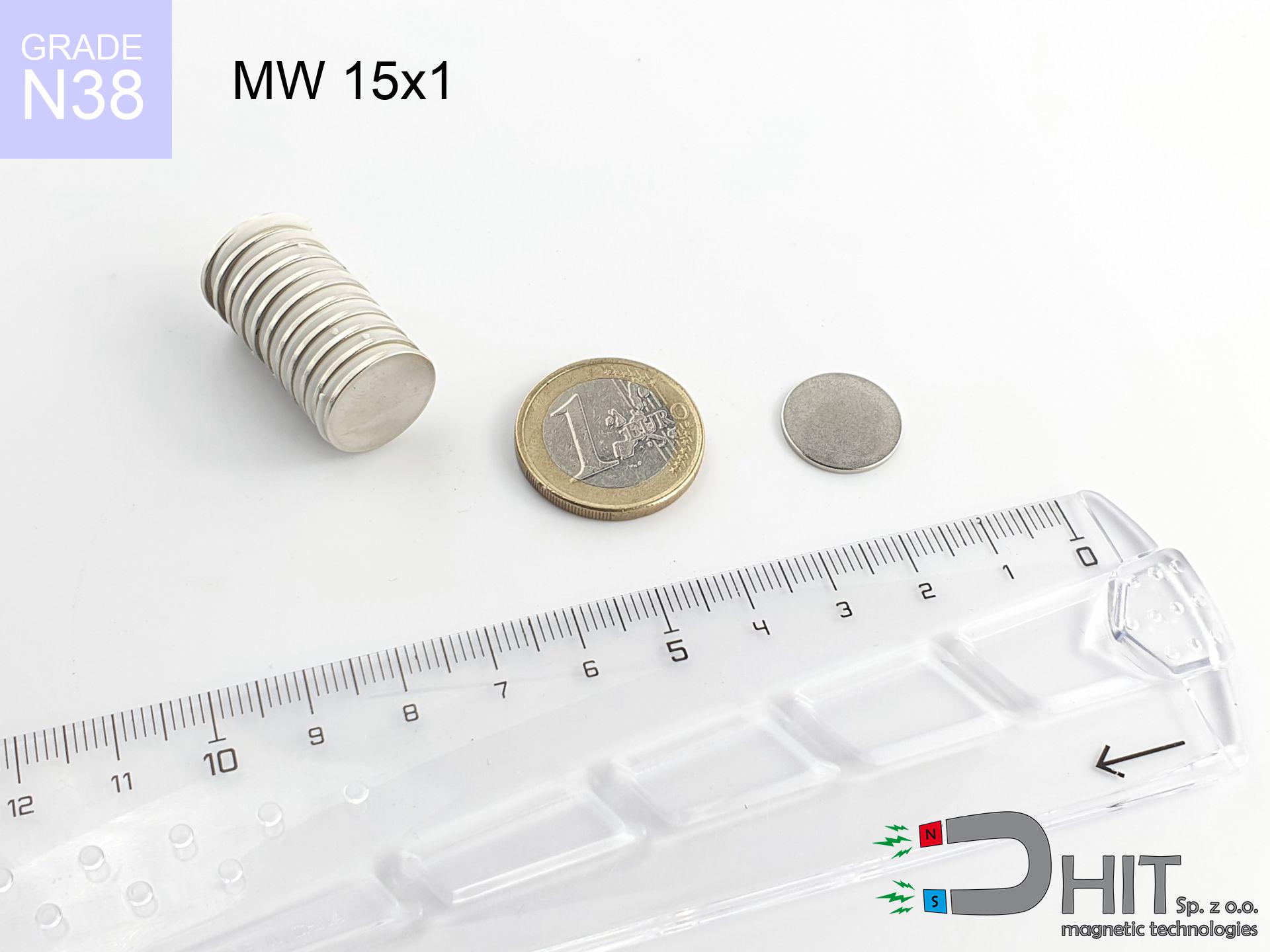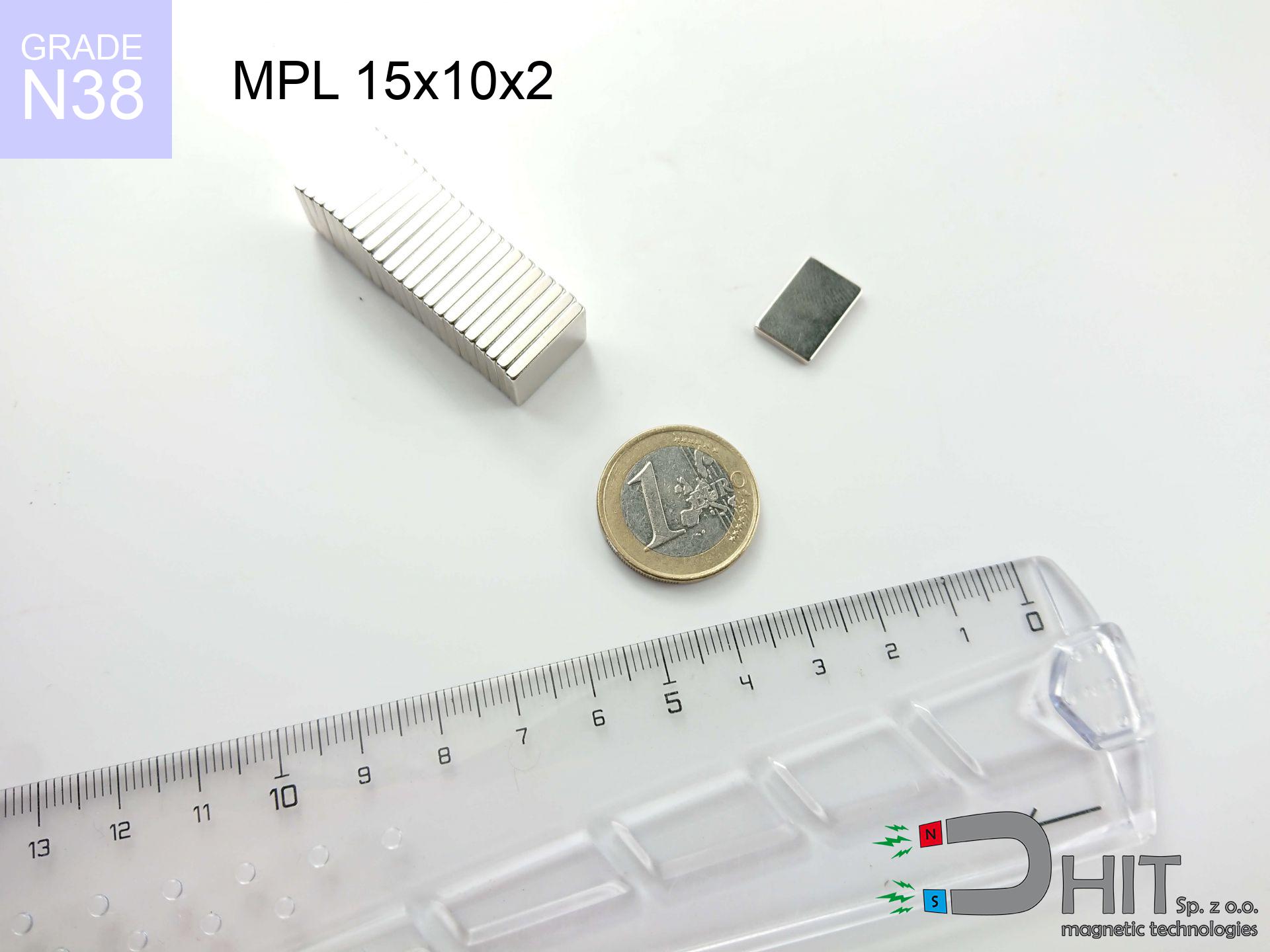SM 32x500 [2xM8] / N42 - magnetic separator
magnetic separator
Catalog no 130374
GTIN/EAN: 5906301813224
Diameter Ø
32 mm [±1 mm]
Height
500 mm [±1 mm]
Weight
2670 g
Magnetic Flux
~ 8 000 Gauss [±5%]
1488.30 ZŁ with VAT / pcs + price for transport
1210.00 ZŁ net + 23% VAT / pcs
bulk discounts:
Need more?
Call us now
+48 22 499 98 98
alternatively get in touch via
our online form
our website.
Strength along with form of magnetic components can be verified using our
online calculation tool.
Orders placed before 14:00 will be shipped the same business day.
Technical specification of the product - SM 32x500 [2xM8] / N42 - magnetic separator
Specification / characteristics - SM 32x500 [2xM8] / N42 - magnetic separator
| properties | values |
|---|---|
| Cat. no. | 130374 |
| GTIN/EAN | 5906301813224 |
| Production/Distribution | Dhit sp. z o.o. |
| Country of origin | Poland / China / Germany |
| Customs code | 85059029 |
| Diameter Ø | 32 mm [±1 mm] |
| Height | 500 mm [±1 mm] |
| Weight | 2670 g |
| Material Type | Stainless steel AISI 304 / A2 |
| Magnetic Flux | ~ 8 000 Gauss [±5%] |
| Size/Mount Quantity | 2xM8 |
| Polarity | circumferential - 19 poles |
| Casing Tube Thickness | 1 mm |
| Manufacturing Tolerance | ±1 mm |
Magnetic properties of material N42
| properties | values | units |
|---|---|---|
| remenance Br [min. - max.] ? | 12.9-13.2 | kGs |
| remenance Br [min. - max.] ? | 1290-1320 | mT |
| coercivity bHc ? | 10.8-12.0 | kOe |
| coercivity bHc ? | 860-955 | kA/m |
| actual internal force iHc | ≥ 12 | kOe |
| actual internal force iHc | ≥ 955 | kA/m |
| energy density [min. - max.] ? | 40-42 | BH max MGOe |
| energy density [min. - max.] ? | 318-334 | BH max KJ/m |
| max. temperature ? | ≤ 80 | °C |
Physical properties of sintered neodymium magnets Nd2Fe14B at 20°C
| properties | values | units |
|---|---|---|
| Vickers hardness | ≥550 | Hv |
| Density | ≥7.4 | g/cm3 |
| Curie Temperature TC | 312 - 380 | °C |
| Curie Temperature TF | 593 - 716 | °F |
| Specific resistance | 150 | μΩ⋅cm |
| Bending strength | 250 | MPa |
| Compressive strength | 1000~1100 | MPa |
| Thermal expansion parallel (∥) to orientation (M) | (3-4) x 10-6 | °C-1 |
| Thermal expansion perpendicular (⊥) to orientation (M) | -(1-3) x 10-6 | °C-1 |
| Young's modulus | 1.7 x 104 | kg/mm² |
Material specification
| iron (Fe) | 64% – 68% |
| neodymium (Nd) | 29% – 32% |
| boron (B) | 1.1% – 1.2% |
| dysprosium (Dy) | 0.5% – 2.0% |
| coating (Ni-Cu-Ni) | < 0.05% |
Sustainability
| recyclability (EoL) | 100% |
| recycled raw materials | ~10% (pre-cons) |
| carbon footprint | low / zredukowany |
| waste code (EWC) | 16 02 16 |
Check out more offers
Advantages as well as disadvantages of neodymium magnets.
Benefits
- They retain magnetic properties for around 10 years – the loss is just ~1% (based on simulations),
- They are extremely resistant to demagnetization induced by presence of other magnetic fields,
- The use of an aesthetic finish of noble metals (nickel, gold, silver) causes the element to be more visually attractive,
- Magnets have impressive magnetic induction on the outer layer,
- Due to their durability and thermal resistance, neodymium magnets are capable of operate (depending on the shape) even at high temperatures reaching 230°C or more...
- Due to the option of precise molding and adaptation to individualized solutions, neodymium magnets can be created in a broad palette of shapes and sizes, which increases their versatility,
- Universal use in modern technologies – they serve a role in HDD drives, electric drive systems, medical equipment, as well as multitasking production systems.
- Relatively small size with high pulling force – neodymium magnets offer strong magnetic field in tiny dimensions, which allows their use in miniature devices
Cons
- They are prone to damage upon heavy impacts. To avoid cracks, it is worth securing magnets in a protective case. Such protection not only shields the magnet but also increases its resistance to damage
- When exposed to high temperature, neodymium magnets suffer a drop in force. Often, when the temperature exceeds 80°C, their power decreases (depending on the size and shape of the magnet). For those who need magnets for extreme conditions, we offer [AH] versions withstanding up to 230°C
- Magnets exposed to a humid environment can corrode. Therefore during using outdoors, we advise using waterproof magnets made of rubber, plastic or other material protecting against moisture
- We suggest casing - magnetic holder, due to difficulties in realizing threads inside the magnet and complicated forms.
- Health risk related to microscopic parts of magnets pose a threat, in case of ingestion, which gains importance in the context of child safety. Furthermore, tiny parts of these devices are able to disrupt the diagnostic process medical when they are in the body.
- Due to neodymium price, their price is relatively high,
Lifting parameters
Detachment force of the magnet in optimal conditions – what affects it?
- on a block made of structural steel, optimally conducting the magnetic field
- possessing a thickness of at least 10 mm to avoid saturation
- with an polished contact surface
- without any air gap between the magnet and steel
- for force applied at a right angle (pull-off, not shear)
- at temperature approx. 20 degrees Celsius
Lifting capacity in practice – influencing factors
- Air gap (betwixt the magnet and the metal), as even a very small clearance (e.g. 0.5 mm) leads to a decrease in lifting capacity by up to 50% (this also applies to paint, rust or debris).
- Loading method – declared lifting capacity refers to pulling vertically. When attempting to slide, the magnet exhibits significantly lower power (often approx. 20-30% of nominal force).
- Element thickness – to utilize 100% power, the steel must be sufficiently thick. Paper-thin metal limits the attraction force (the magnet "punches through" it).
- Material composition – different alloys reacts the same. High carbon content worsen the attraction effect.
- Base smoothness – the more even the surface, the better the adhesion and stronger the hold. Unevenness creates an air distance.
- Thermal factor – high temperature reduces magnetic field. Exceeding the limit temperature can permanently demagnetize the magnet.
Lifting capacity testing was conducted on plates with a smooth surface of suitable thickness, under a perpendicular pulling force, in contrast under shearing force the lifting capacity is smaller. In addition, even a minimal clearance between the magnet and the plate decreases the holding force.
Safe handling of NdFeB magnets
Cards and drives
Intense magnetic fields can corrupt files on payment cards, hard drives, and other magnetic media. Maintain a gap of at least 10 cm.
Nickel allergy
A percentage of the population have a sensitization to nickel, which is the typical protective layer for neodymium magnets. Frequent touching may cause skin redness. It is best to use protective gloves.
Life threat
For implant holders: Powerful magnets disrupt medical devices. Maintain minimum 30 cm distance or ask another person to handle the magnets.
Shattering risk
Neodymium magnets are sintered ceramics, which means they are fragile like glass. Impact of two magnets leads to them breaking into shards.
Power loss in heat
Watch the temperature. Heating the magnet above 80 degrees Celsius will permanently weaken its properties and strength.
Dust is flammable
Mechanical processing of NdFeB material carries a risk of fire risk. Neodymium dust oxidizes rapidly with oxygen and is difficult to extinguish.
No play value
NdFeB magnets are not toys. Swallowing a few magnets can lead to them attracting across intestines, which constitutes a severe health hazard and necessitates immediate surgery.
Compass and GPS
An intense magnetic field interferes with the functioning of compasses in smartphones and navigation systems. Do not bring magnets close to a smartphone to prevent breaking the sensors.
Serious injuries
Mind your fingers. Two large magnets will join instantly with a force of massive weight, crushing everything in their path. Be careful!
Handling rules
Handle magnets with awareness. Their immense force can surprise even professionals. Stay alert and do not underestimate their power.

![Magnetic bar SM 32x500 [2xM8] / N42 Magnetic bar SM 32x500 [2xM8] / N42](https://cdn3.dhit.pl/graphics/banners/magnet.webp)
![SM 32x500 [2xM8] / N42 - magnetic separator](https://cdn3.dhit.pl/graphics/products/sm-32x500-2xm8-jan.jpg)





